CamTESOL Educational and Cultural Tours
The CamTESOL Educational and Cultural tours aim to provide an opportunity for international visitors to gain insights into the Cambodian educational context, culture, and history as well as the city life and views of Phnom Penh. For first-time visitors to Cambodia, these tours will enhance your experience of the country and provide you with a better understanding of the educational context of the CamTESOL conference as well as the culture and lifestyles of the Cambodian people. Prior to presenting to a predominantly Cambodian audience, presenters at the conference can take this excellent opportunity to gain first-hand impressions of local schools and the local learning environment.
All tours are scheduled for the morning of Friday, 23rd February 2024. Tours will commence promptly at 8:00 AM and finish after a complimentary lunch at 12:00 PM. There will be a maximum number of participants on each tour.
Each tour is ticketed at US$ 60. The price includes all essentials such as entry fee for each destination, lunch, transport to and from destination, complimentary conference souvenirs, and an expert guide at specific destinations. Hence, participants can choose ONLY one tour among the following organized tours:
- Tour #1: City Landmarks
- Tour #2: Cultural Site Visits
- Tour #3: Historical Site Visits
- Tour #4: Educational Site Visits
- Tour #5: Morning Mekong River Cruise
Wat Phnom in Cambodia is an ancient and spiritually significant temple located in Phnom Penh. It was built in the 14th century to house sacred relics discovered by a widow named Daun Penh. The temple showcases a beautiful blend of Cambodian and Khmer architectural styles, featuring intricate carvings and colorful murals. Visitors can enjoy a serene atmosphere amidst the city, with stunning views from the hilltop. The temple is a place of prayer and devotion, where monks engage in religious practices. The lush gardens and playful monkeys add to the charm of the surroundings. Wat Phnom is also a social hub, with vendors selling offerings and local snacks. For photography enthusiasts, the temple offers numerous picturesque opportunities. Overall, a visit to Wat Phnom provides an immersive experience in Cambodia"s cultural heritage, artistry, and spiritual customs.
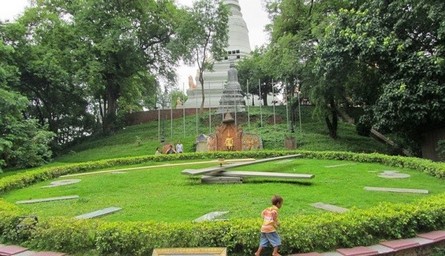
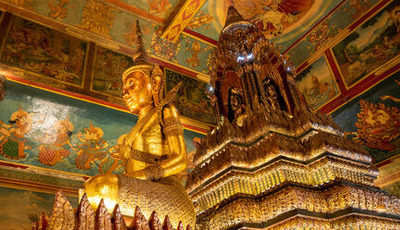
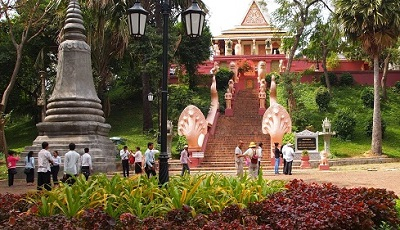
An Angkorian-style tower, Independence Monument (VimeanEkareach in Khmer) was built in 1958 to symbolise Cambodian Independence Day after winning back independence from French colonial rule on 09 November 1953. With its spectacular unique style, the Independence Monument attracts many tourists every day. Moreover, the Independence Monument is also used as a memorial place dedicated to Cambodian patriots of the country.

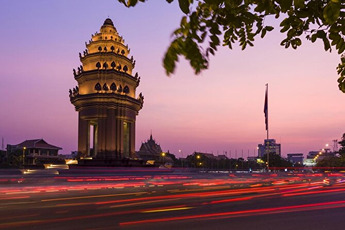

The Central Market (Phsar Thmei) was built in 1937 by French architects and engineers, who designed it in a unique 26-meter dome shape, with four tall arch-roofed arms branching out creating vast hallways. The market survived the turbulent times of war and revolution, and became a symbol of resilience and hope for the Cambodian people. Walking into the market, you can smell the fragrant spices, hear the lively chatter, see the dazzling jewelry, touch the intricate textiles, and taste the delicious street food. You can find everything from fresh fruits and vegetables, to handmade crafts and souvenirs, to antiques and electronics. It’s a place where you can experience the heart and soul of Phnom Penh and Cambodia by discovering enriching Cambodian culture and connecting with friendly local vendors.
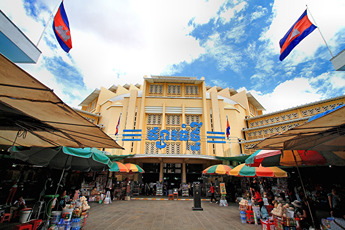
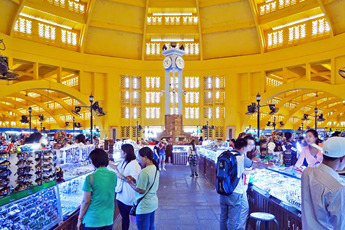
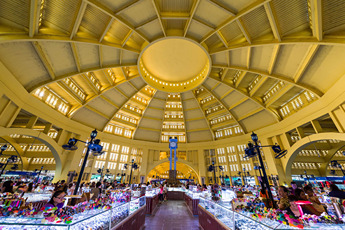
The Royal Palace was built in 1866 during the reign of King Norodom. Around the palace there are several classic Khmer-style buildings, notably the Silver Pagoda. The Silver Pagoda was built by King Norodom in 1892 and rebuilt by Norodom Sihanouk (1926-2012). The floor of the Silver Pagoda contains 5,000 silver tiles, each of them said to weigh 1 kilogram. There is also a collection of gifts from foreign heads of state. Look for the Napoleon III Pavilion, a gift to King Norodom in 1876.



The magnificent building of the National Museum of Cambodia was inaugurated in April 1920. George Grolier, (1887-1945) historian, curator and writer who encouraged the revival of traditional Cambodian Arts and Crafts designed the building. The Museum, now under the direction of the Ministry of Culture and Fine Arts, houses a collection of Khmer cultural materials, including stone sculptures, bronzes, ceramics and ancient historical pottery. The building has a beautiful central courtyard and garden, a haven of peace on a hot day. There is also a small research library for the use of museum staff, researchers and students of the Royal University of Fine Arts. This library has a small but quite significant collection of books and journals in Khmer, French, and English, mostly books on art and archaeology, and museology.
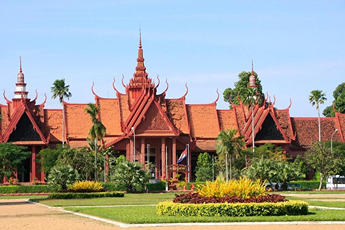
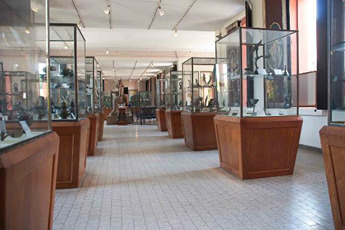
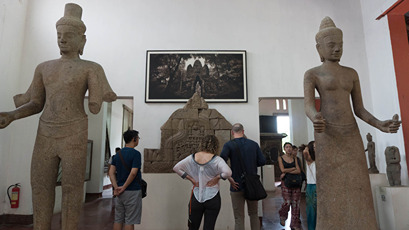
For men, please refrain from wearing shorts, sleeveless shirts, and flip flops when visiting historical sites. Opt for comfortable pants or trousers and closed-toed shoes to ensure you have a pleasant and respectful visit. Wearing a mask is still mandatory on the premises. For women, we kindly ask that you avoid wearing short skirts, tank tops, and flip flops, when exploring the historical ground. Instead, opt for dresses, skirts, or pants that cover the knees, and choose tops with sleeves that cover the shoulders. It is required to wear a mask while on the premises.
Prior to 1975, Toul Sleng was a high school. When the Khmer Rouge came to power, it was converted into the S-21 prison and interrogation facility. Inmates were systematically tortured to extract confessions, after which they were executed at the killing fields of Choeung Ek. S-21 processed over 17,000 people, less than a dozen of whom survived. The building now serves as a museum, a memorial, and a testament to the madness of the Khmer Rouge regime.
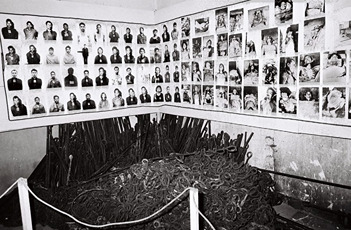
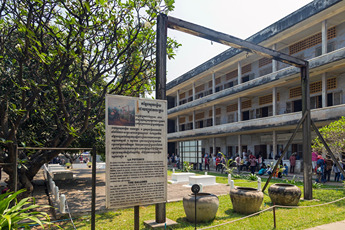
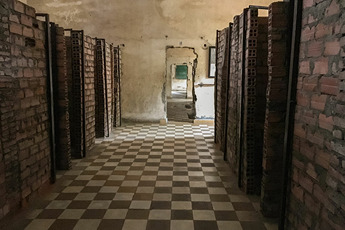
Cheung Ek Genocide Museum, also known as the “Killing Field” is situated in Cheung Ek commune, about 15 km south-west of Phnom Penh. The Cheung Ek killing field was a place where more than 17,000 civilians were killed and buried in mass graves after they were tortured at and transported from Toul Sleng Prison S-21. A 17- storey glass stupa was built to house 8000 skulls collected from the mass graves. Every year on 24 May a ceremony is held around this stupa to bring peace to the spirits of the deceased. There were killing fields countrywide during the Khmer Rouge regime (1975-79), but Cheung Ek was believed to be the largest one and most prolific. This historic place stands as a cruel reminder of the atrocities inflicted on the masses of Cambodia.



When you go to the S-21 Prison and the Killing Fields in Cambodia, it"s recommended to dress modestly, in attire that conceals your shoulders, chest, and knees. Please refrain from wearing clothes bearing offensive images or messages to honor the memory of the victims. Choose muted and neutral colors as a gesture of respect and avoid vibrant or flashy outfits. Additionally, take off hats or head coverings as a mark of respect when you enter historically significant sites.
The Phnom Penh Teacher Education College (PTEC) is a teacher training institution located in Phnom Penh, Cambodia. It was established in 2017 through the merger of two former teacher training centers. PTEC"s mission is to provide pre-service and in-service training programs for primary and lower secondary school teachers, as well as to conduct educational research to improve the quality of education in Cambodia.
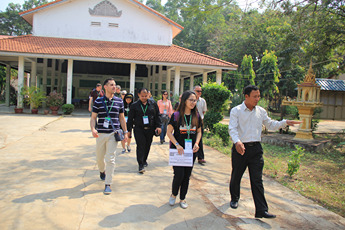
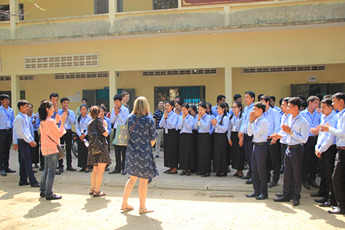
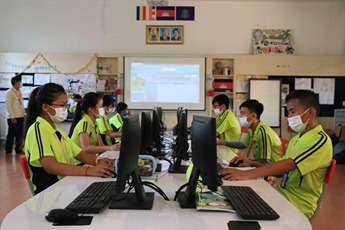
Public High School
Hun Sen Takhmao High School, located just in front of RTTC is a state school famous for producing high quality teaching and learning, which attracts people from the neighbourhood, either near or far away, to enroll in this school. An Outstanding Student Contest is also an event the school takes pride in and is celebrated annually.
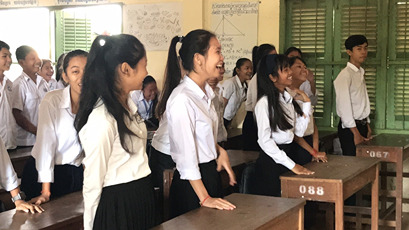
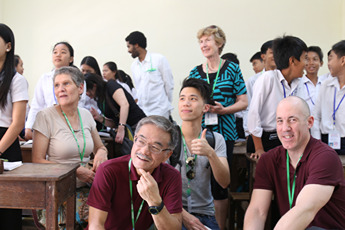
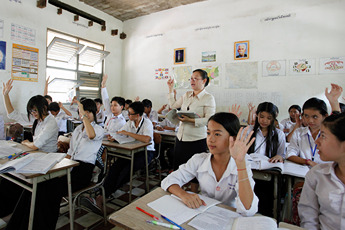
The Australian Centre for Education (ACE) is a world leader in the provision of English language teaching and training with international awards and recognition, and current annual enrolments of 100,000 students of 15 nationalities aged 7 to 50. ACE is also recognised locally and globally for being on the forefront of Corporate Social Responsibility (CSR).
On August 4th, 2022, the grand opening of its sixth campus at Chak Angre was presided over by the Australian Foreign Minister Penny Wong, with ACE celebrating its 30th year in the Kingdom after being established in 1992 by IDP Education, a global leader in international student placement services. Standing beside the Bassac River, a major branch of the Mekong, ACE Chak Angre campus can equip a full capacity of 8,000 students with world-class facilities and flexible spaces, and is also home to an IDP Study Abroad Resource Centre and the IELTS Cambodia Official Test Centre.
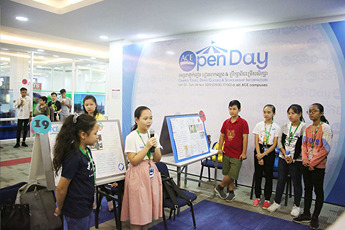
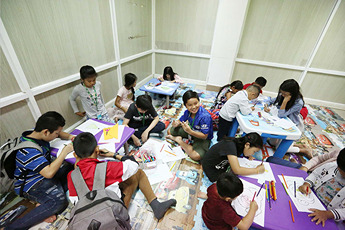
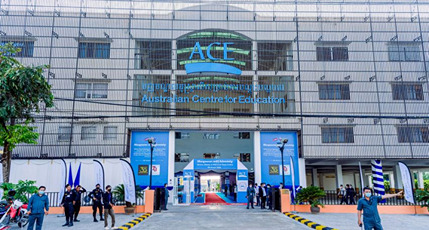
As you sail along the Mekong River, the longest river in Southeast Asia with an estimated length of 4,350 km flowing from its source on the Tibetan Plateau in China through Myanmar, Laos, Thailand, Cambodia and Vietnam before draining into the South China Sea, you will admire the stunning views of Phnom Penh and the Royal Palace, the majestic official residence of the king of Cambodia. The Mekong River is a major trade route and a source of livelihood for millions of people. It also supports a rich and diverse ecosystem with many endemic species. During your boat cruise, you can discover the beauty and culture of Cambodia and also enjoy the delicious local cuisine. A boat cruise on the Mekong River is a memorable and rewarding experience that you will never forget.
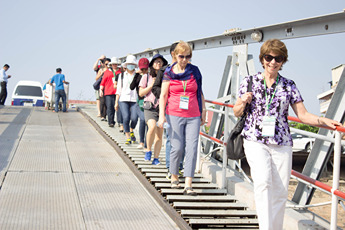
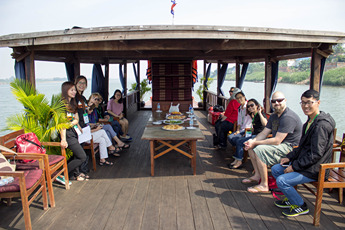
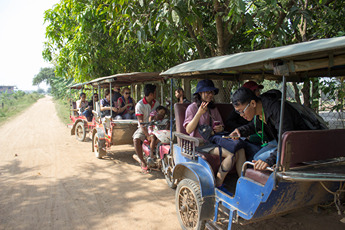
A boat cruise along the four rivers area is a scenic way to admire the views of Phnom Penh and the Royal Palace, the official residence of the king of Cambodia. As you sail up the Mekong River, you will reach Koh Oknha Tei, also known as Silk Island, a tranquil retreat from the bustling city. You can explore the traditional silk weaving village, where you can learn about the history and techniques of this ancient craft. You can also see how the silk worms are raised and fed with mulberry leaves, how the silk yarn is spun and dyed, and how the weavers create intricate patterns on their wooden looms. You can even buy some of the beautiful silk products, such as scarves, skirts, and bags, as souvenirs or gifts. Silk Island is a great place to experience the rural charm and cultural heritage of Cambodia.
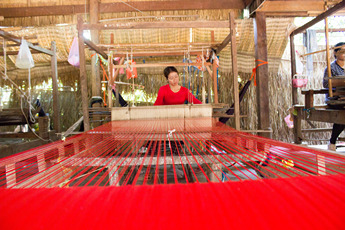
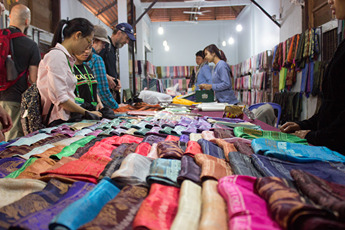
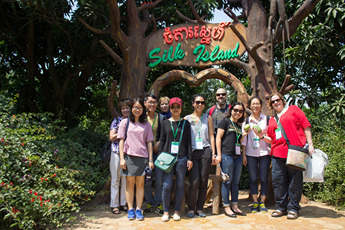
Koh Oknha Tey Junior High School is a school located on Koh Oknha Tey, a small island in the Mekong River in Cambodia. The island is also known as Silk Island, because it is home to many silk weaving workshops and farms. Part of the Koh Oknha Tey High School, the school aims to provide quality education and life skills for the students, and to promote the cultural heritage of the island. The school also organizes various activities and events, such as sports, arts, and community service.
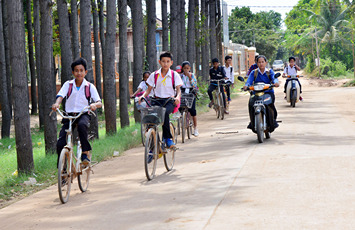
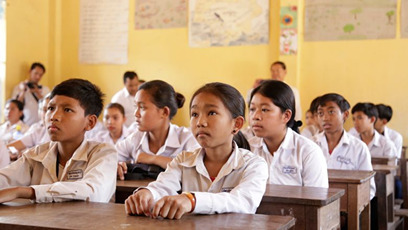

× ![]()